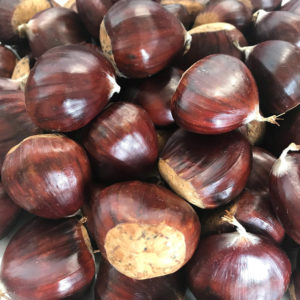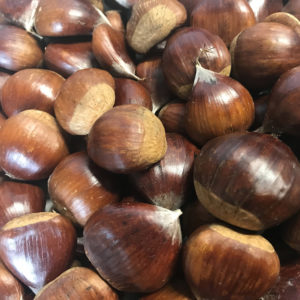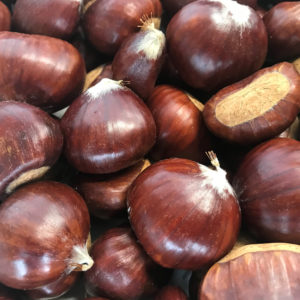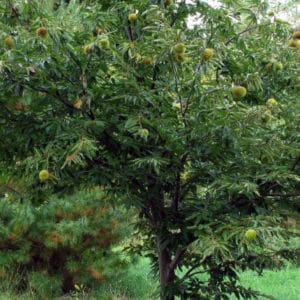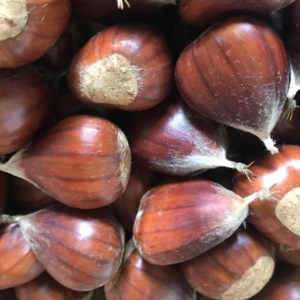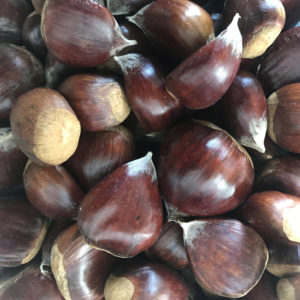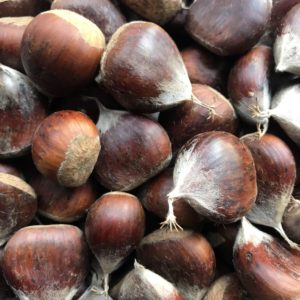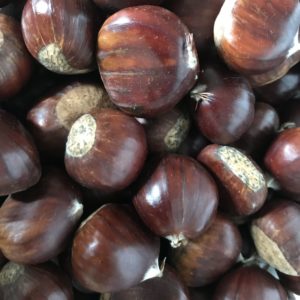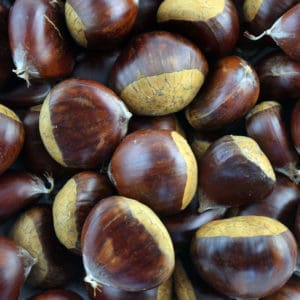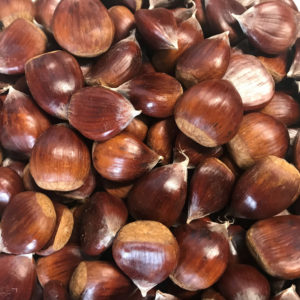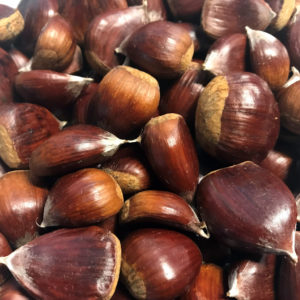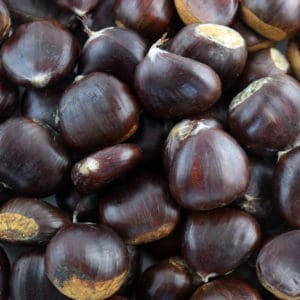Chestnut Trees
Chestnut (Castanea). Chestnuts are amazing trees capable of bountiful nut production every year. Unlike other nut trees which may produce large crops every few years and then have small crops in other years, the chestnut provides reliable stable production every year.
Not only are chestnuts bountiful every year, but their uses as a food are wide ranging. Everybody knows and loves roasted chestnuts, but they can also be candied, boiled, ground into meal or even baking flour. Their sweetness adds a delicate delicious flavor to baked goods, and their texture produces amazing cakes.
They also make excellent shade trees with large spreading arms. Their large bright green oblong-lanceolate leaves are strikingly beautiful lending an almost tropical look to the tree. When their prolific creamy yellow catkins bloom in summer, they are absolute show stoppers! The blossoms will be loaded with pollinators. In fact, if you’re looking for a tree to provide food for you and all the local pollinators, the chestnut tree is your friend.
Plant two or more cultivars for nut-bearing landscape trees to provide beautiful shade and accent in your garden. Make sure to check the pollination info for the cultivar you’re considering, some are pollen sterile and need a pollinizer tree with overlapping bloom time. For orchard planting, plant them at 35 to 40 foot spacing. Chestnuts need good sun and soil with good draining capacity. The ideal soil would have 25% to 75% sand and a pH of 4.5 to 6.5. If planting in soils that tend to have higher clay content, use ‘pit and mound’ planting to raise their root crowns above the water table.
Showing all 12 results

